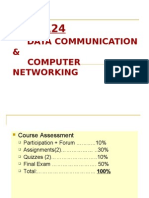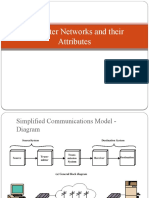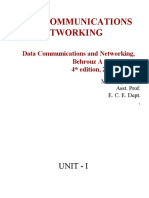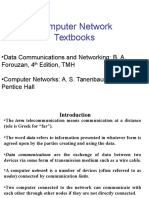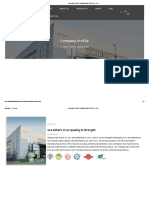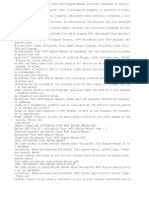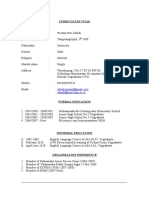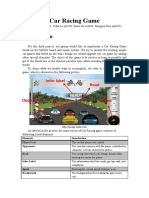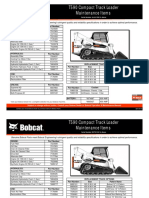0% found this document useful (0 votes)
113 views60 pagesCh1 - Introduction To Data Communication
The document discusses various topics related to data communication and computer networks. It begins by defining data communication and its key characteristics. It then describes the basic components of a data communication system including messages, senders, receivers, transmission medium, and protocols. It further discusses data flow models like simplex, half-duplex, and full-duplex. The document also covers network types and criteria. It defines different network topologies such as bus, ring, star, mesh, tree, and hybrid along with their features and advantages/disadvantages. Finally, it categorizes computer networks based on their size and distance as personal area network (PAN), local area network (LAN), metropolitan area network (MAN), and wide area network
Uploaded by
it89Copyright
© © All Rights Reserved
We take content rights seriously. If you suspect this is your content, claim it here.
Available Formats
Download as PPT, PDF, TXT or read online on Scribd
0% found this document useful (0 votes)
113 views60 pagesCh1 - Introduction To Data Communication
The document discusses various topics related to data communication and computer networks. It begins by defining data communication and its key characteristics. It then describes the basic components of a data communication system including messages, senders, receivers, transmission medium, and protocols. It further discusses data flow models like simplex, half-duplex, and full-duplex. The document also covers network types and criteria. It defines different network topologies such as bus, ring, star, mesh, tree, and hybrid along with their features and advantages/disadvantages. Finally, it categorizes computer networks based on their size and distance as personal area network (PAN), local area network (LAN), metropolitan area network (MAN), and wide area network
Uploaded by
it89Copyright
© © All Rights Reserved
We take content rights seriously. If you suspect this is your content, claim it here.
Available Formats
Download as PPT, PDF, TXT or read online on Scribd
/ 60





























